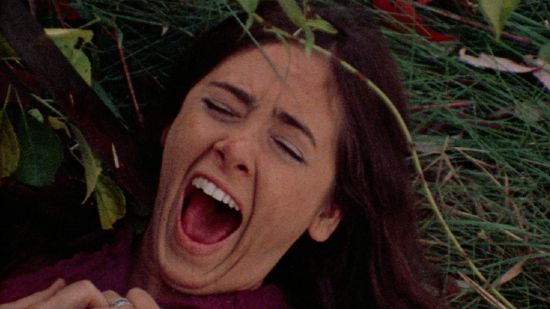The Last House on the Left Is Still a Confrontation
Wes Craven’s provocative, exploitative horror movie turns 50

My kids’ school district has installed metal detectors in the wake of a stabbing, and so my 12-year-old’s day now begins by lining up in front of the school and having all her possessions shaken down. The stabbing occurred outside one of the high schools, which, I feel it’s important to note, is not where the metal detectors have been installed. Nor, I also feel it’s important to note, will the metal detectors conceivably prevent any future stabbings outside the schools, being as they are, you know, inside. It’s another reminder, as maskless Americans collectively drag ass through year three of a pandemic that killed 15,000 people last month, that sometimes our ideas of safety are not always logical or rational.
Wes Craven—and contemporaries of his like John Carpenter, Sean S. Cunningham and Tobe Hooper—all seized on the general sense of dread and decline that seemed to be gripping the comfy (white) families of the United States in the 1970s and made horror films rooted in the idea of regular, innocent people killed by violent, unhinged degenerates. Maybe everybody still had old Charlie on the brain. It was an atmosphere that eventually gave rise to the slasher genre as we now know it, rooted at least partly in home invasion panic.
Craven’s The Last House on the Left, a quick and dirty exploitation horror that he and Cunningham banged out for $90,000 and which subsequently grossed $3 million, starts from the same place as something like Halloween or The Texas Chain Saw Massacre, but goes somewhere darker than either. It is acutely and roguishly aware of just how bizarrely dissonant it is, and seems to want you to be mad about it. Even 50 years after its release, watching it still feels like being confronted. If the events depicted in it occurred here in my school district’s jurisdiction, I’m sure we’d have even more metal detectors in all sorts of useless places.
Last House begins with a card saying it’s based on true events, which is bullshit: It’s really a loose adaptation of Ingmar Bergman’s The Virgin Spring, a 1960 rape revenge film, itself based on an older story. Mari (Sandra Peabody, credited as Sandra Cassell), who has just turned 17, leaves her family’s heavily wooded property to go partying with a friend in the big scary city. The two are ensnared by a group of cartoonishly evil criminals who have broken every kind of law: Ringleader Krug (David Hess) and his drug-addled son Junior (Marc Sheffler), Weasel (Fred Lincoln) and the only lady in the bunch, whose name is of course Sadie (Jeramie Rain).
The movie intercuts graphic scenes of the two helpless girls’ torture and abuse with the utter cluelessness of Mari’s parents (Cynthia Carr and Richard Towers) and the police (Marshall Anker and Martin Kove) as they completely and utterly fail to guess the danger the missing women are in, or do anything to prevent what happens to them.
Last House was made on the cheap and it shows: You’re not getting top-quality lighting or sound, and there are some clear moments of utterly confused editing in the last reel that make you wonder if the script suddenly changed at some point in shooting, or if the budget was running so short that the filmmakers had to hurry things along to get it in the can. Nonetheless, it’s easy to see why it became a lurid sensation once it hit drive-in theaters. The girls are raped, tortured and killed in gory, shocking fashion: Mari’s friend is dismembered and Mari herself, dazed from being raped, wanders into a marsh before Krug shoots her dead.
-

-

-

-

- Curated Home Page Articles By Test Admin October 21, 2025 | 3:10pm
-

- Curated Home Page Articles By Test Admin October 21, 2025 | 2:57pm
- Urls By Test Admin October 21, 2025 | 2:57pm
- Curated Home Page Articles By Test Admin October 21, 2025 | 2:55pm
-

-

-

-

-

-

-

-

-

-

-

-

-

-

-

-

-

-

-

-

-

-

-

-

-

-

-

-

-

-

-





































